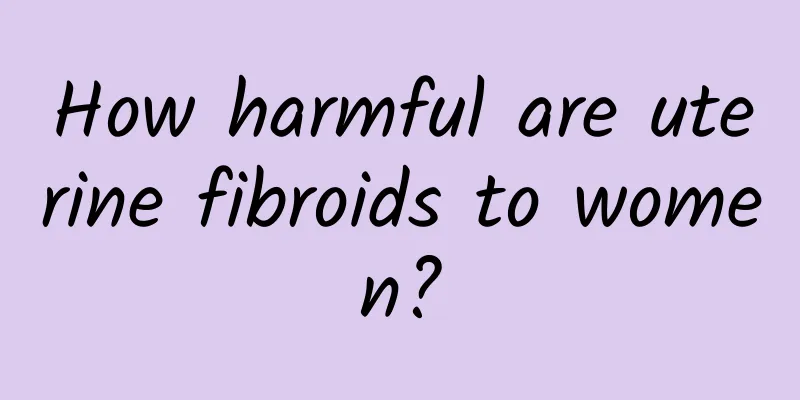How to know if you have intrauterine adhesions

|
How do I know if I have uterine adhesions? Generally speaking, whether you have intrauterine adhesions can be determined through personal life history, clinical symptoms, ultrasound examination, hysterosalpingography, hysterosalpingography, and sonohysterography. 1. Personal life history: Intrauterine adhesions are a disease in which the uterine cavity is partially or completely blocked due to damage to the endometrium. The cause of this disease is related to multiple artificial abortions and curettage. If the above life history exists, the risk of disease may increase. 2. Clinical symptoms: After the disease occurs, the menstrual volume may decrease, and in severe cases, amenorrhea may occur. The patient may experience repeated miscarriages, premature births, etc. If the above clinical symptoms occur, you can seek medical attention in time and make a clear judgment through corresponding examinations. 3. Ultrasound examination: If you suspect you have this disease, you can go to a regular hospital for gynecology in time. Doctors usually use ultrasound to determine whether there is fluid accumulation in the uterine cavity and whether the echo and thickness of the endometrium are uniform. By clarifying the above information, a clearer diagnosis of the disease can be made. 4. Hysterosalpingography: It injects contrast agent into the uterine cavity through the cervix, and then uses pelvic films to show the uterine cavity shape and whether the fallopian tubes are unobstructed to determine the situation inside the uterine cavity. 5. Uterine sonosonography: During this examination, contrast agent is injected into the uterine cavity to observe uterine cavity lesions and determine whether there are uterine cavity adhesions. This diagnostic method is also simple to operate, safe, and tolerable. Patients can choose the appropriate examination method based on their personal situation under the doctor's advice. After diagnosis, treatment can be carried out through laparoscopic surgery, abdominal surgery and other methods. |
<<: What are the treatments for uterine fibroids?
>>: What is the cause of vulvar itching and excessive leucorrhea?
Recommend
Are you a holiday athlete? Is it normal to feel sore all over after exercise?
To live you have to move, but too much or too int...
What causes women to suffer from vulvar leukoplakia?
Among gynecological diseases, vulvar leukoplakia ...
How to treat acute Bartholinitis
Acute Bartholinitis usually requires medication, ...
How do you get an ovarian cyst? How do you diagnose an ovarian cyst?
How do you get an ovarian cyst? How are ovarian c...
Dysfunctional uterine bleeding during menopause
Dysfunctional uterine bleeding during menopause r...
The main causes of cervicitis
Cervicitis is a common gynecological disease, and...
The cost of treating cervical erosion, 5 factors that affect how much it costs to treat cervical erosion
If you have something, don't be sick; if you ...
What are the dietary treatments for vaginitis?
Everyone should have heard of vaginitis. Recently...
How to diagnose uterine effusion best
Although the occurrence of uterine effusion is cl...
Analysis of the causes of infertility caused by pelvic inflammatory disease
Pelvic inflammatory disease is the abbreviation o...
What are the obvious symptoms of vaginal candidiasis?
What is candidal vaginitis? What are the symptoms...
Which one is better at lowering blood sugar: bitter melon or mountain bitter melon? Nutritionist: Eat vegetables wisely for diabetes
Diabetics generally know that they should eat les...
Best treatment for chronic pelvic inflammatory disease
Chronic pelvic inflammatory disease brings great ...
Experts guide the correct use of medication for threatened abortion
Threatened abortion, it seems like a glaring word...
What is the pain in the lower body after miscarriage?
What's wrong with lower body pain after misca...









